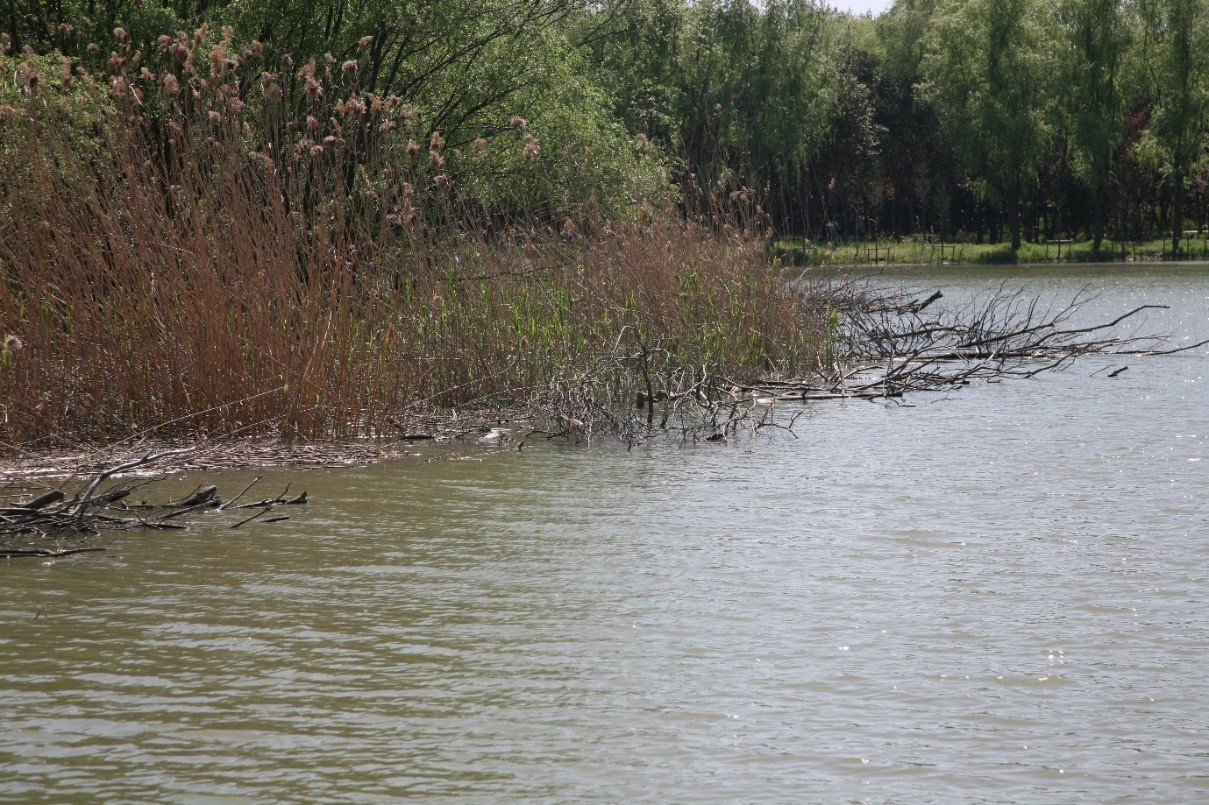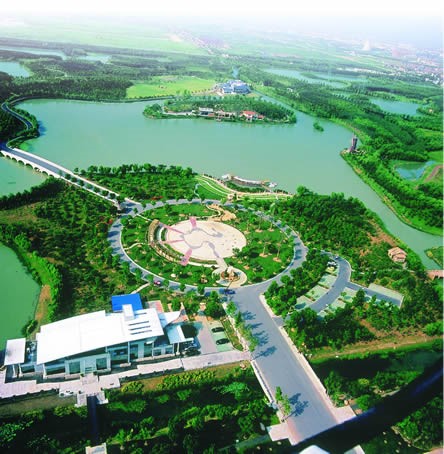Forest Park ecological wetland - China
Contact
Insight:
Project description
The ecological wetland project aims to improve the water quality of five large park lakes by transforming traditional green space into multifunctional green infrastructure which provides water treatment, water recirculation, and extra flooding storage within a versatile landscape. In addition, an ecological restoration zone is planned to protect and remediate the local aquatic and terrestrial habitat, restoring the ecological values and encouraging flora and fauna back to the area.
Woody debris enhances fish breeding habitat

The drivers
Improve waterway quality for enhanced community wellbeing and environmental health
The innovations
Working demonstration of innovative flood management and water treatment approach to protect a growing population and its downstream aquatic environments
- Automatic flood relief: The lake system is hydraulically connected to an adjacent waterway by an active gate. If the polder reaches a critical flood level, the gate opens and allows for the Forest Park Lake system to act as additional storage for flood waters.
- Multifunctional landscapes: Forest Park wetlands have been designed to support both water quality treatment and passive recreation within a broader parkland setting.
- Polder water recirculation: Polder water is recirculated through constructed wetlands for greater waterway health.
- Improved ecological value of open space: The forest plantations within Forest Park were reviewed with the objective of enhancing their ecological value. One area within the park was found to support significantly greater bird life than other areas. This was an island that received no parkland maintenance. Pathway and visitation patterns were reviewed accordingly and areas adjacent to the high ecological value island were zoned for ecological enhancement, forming a large area dedicated to habitat and biodiversity. Pathways for pedestrians were downgraded, buffer planting was established, and any parkland style maintenance ceased to reduce disturbance.
- Fish breeding habitat creation: The lakes in Forest Park are mostly excavated waterbodies. Consequently, there is limited natural habitat diversity. The constructed wetland component of the project was going to result in some tree removal, so an opportunity was taken to use the removed trees as large woody debris in the lakes as enhanced fish habitat. Wood debris was carefully located to improve the littoral zone of the existing habitat island and to reduce wave action on the windward edge of the island.

The lessons
- Parklands can be designed to become multifunctional water management infrastructure, providing both filtration to improve water quality and flood water storage.
- Cleared trees can be utilised for habitat creation providing an important ecological resource while lowering disposal costs.
Transferability
Share this
Project stats
Location
Kunshan, Jiangsu, China
Participants
CRC for Water Sensitive Cities
Kunshan City Construction, Investment and Development Group
Suzhou Garden Design Institute
Awards
The park has received a number of honours, including National Science Popularization Base and the First Health-Themed Park in Kunshan. In 2008, the park was approved by the Ministry of Housing as a National Urban Wetland Park.
Additional information
Contact
The outcomes
 Cities providing ecosystem services
Cities providing ecosystem services

- New urban wetlands: Lake-wetland system provides water cycling and purification.
- Biodiversity values: Forest enables nutrient cycling, pollination and the provision of habitat. There are over 60 varieties of wild animals, including otters and zibets, and approx. 10,000 migratory birds visit the park every year.
- Air purification: Park is considered a green lung for the city, because its forest coverage is as high as 95%.
- Climate regulation: Lake system and forest provide evaporative cooling.
- Sense of place: Precinct provides an aesthetic destination for spiritual and recreation activities.
 Cities as water supply catchments
Cities as water supply catchments

- City as a catchment: Lake system offers the opportunity for stormwater harvesting.
 Cities comprising water sensitive communities
Cities comprising water sensitive communities

- Education: Park offers exhibitions of aquatic plants and animals and wetland purification activities.
- Knowledge: Park functions as a platform for science popularisation and research.
Business case
| Costs | Benefits |
|
|
Interested in this solution?
We partner with small and large companies, government and industry in Australia and around the world.
Comments